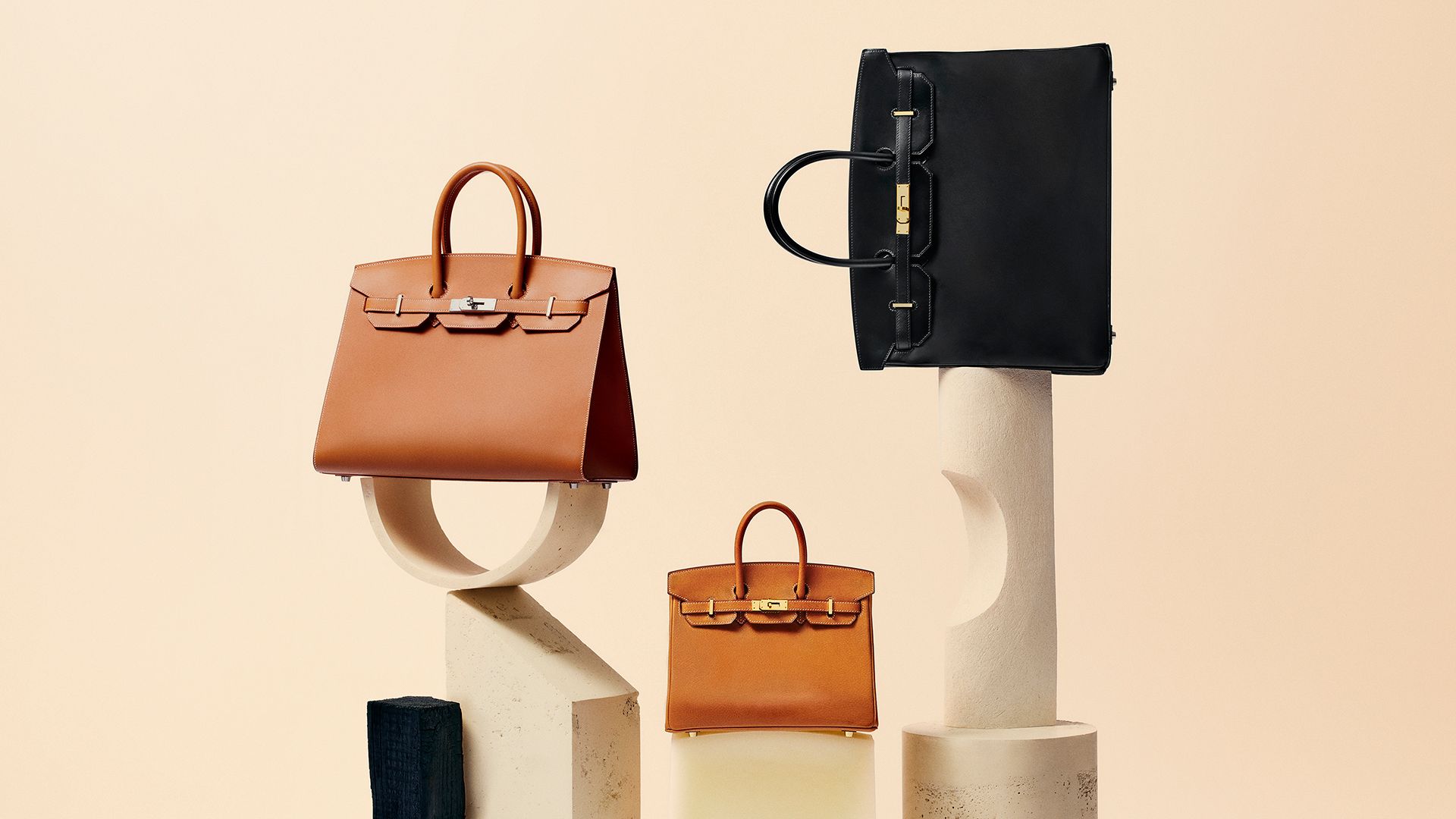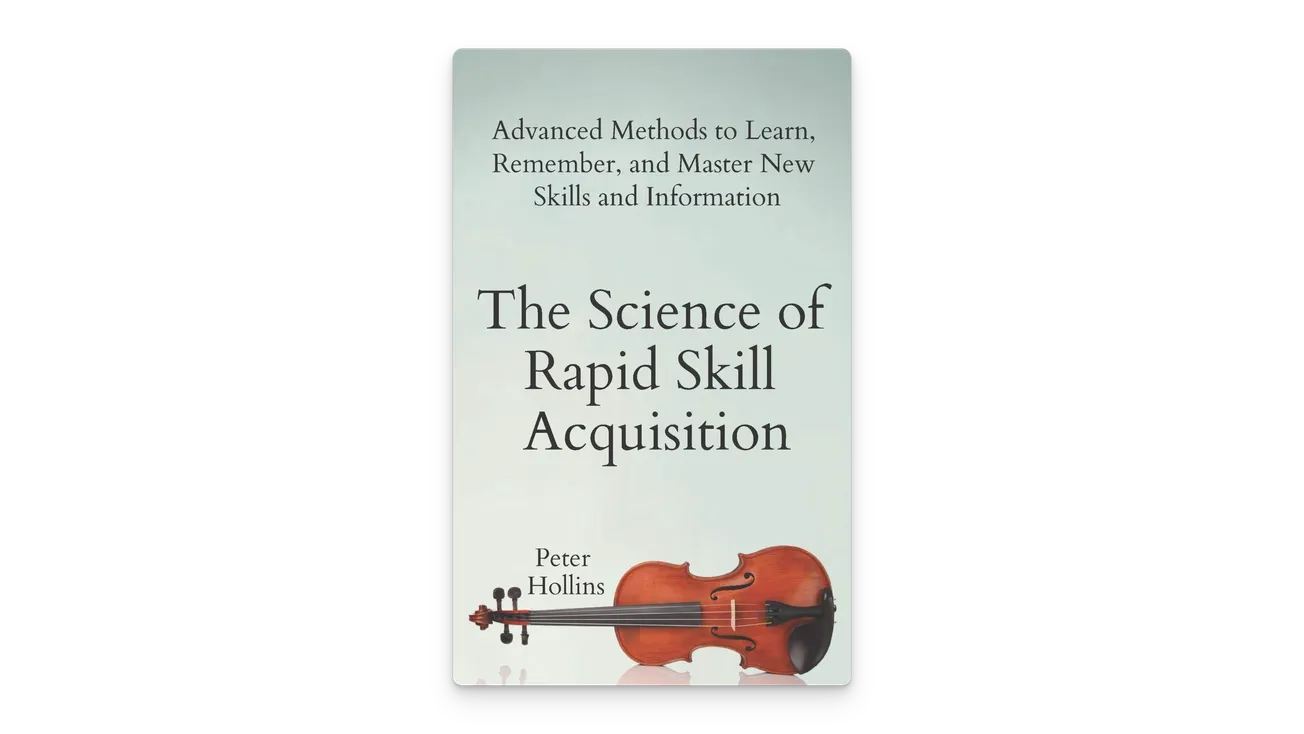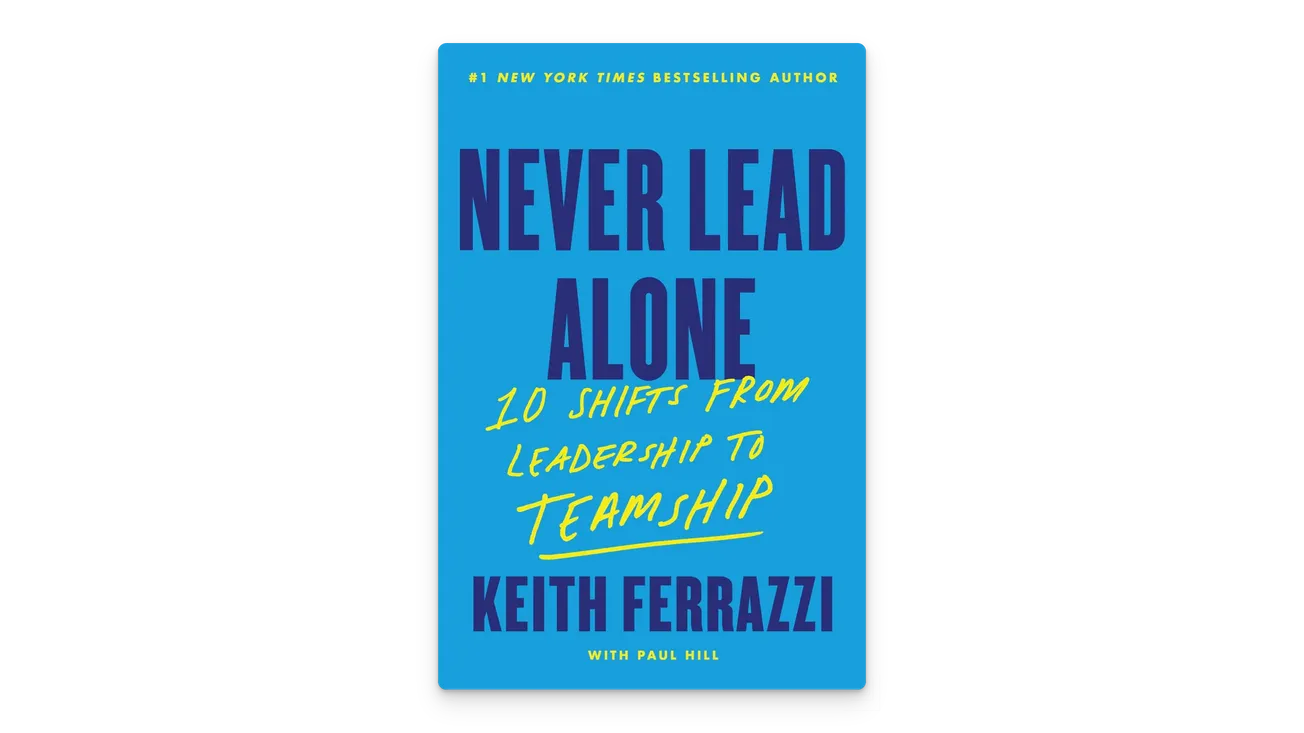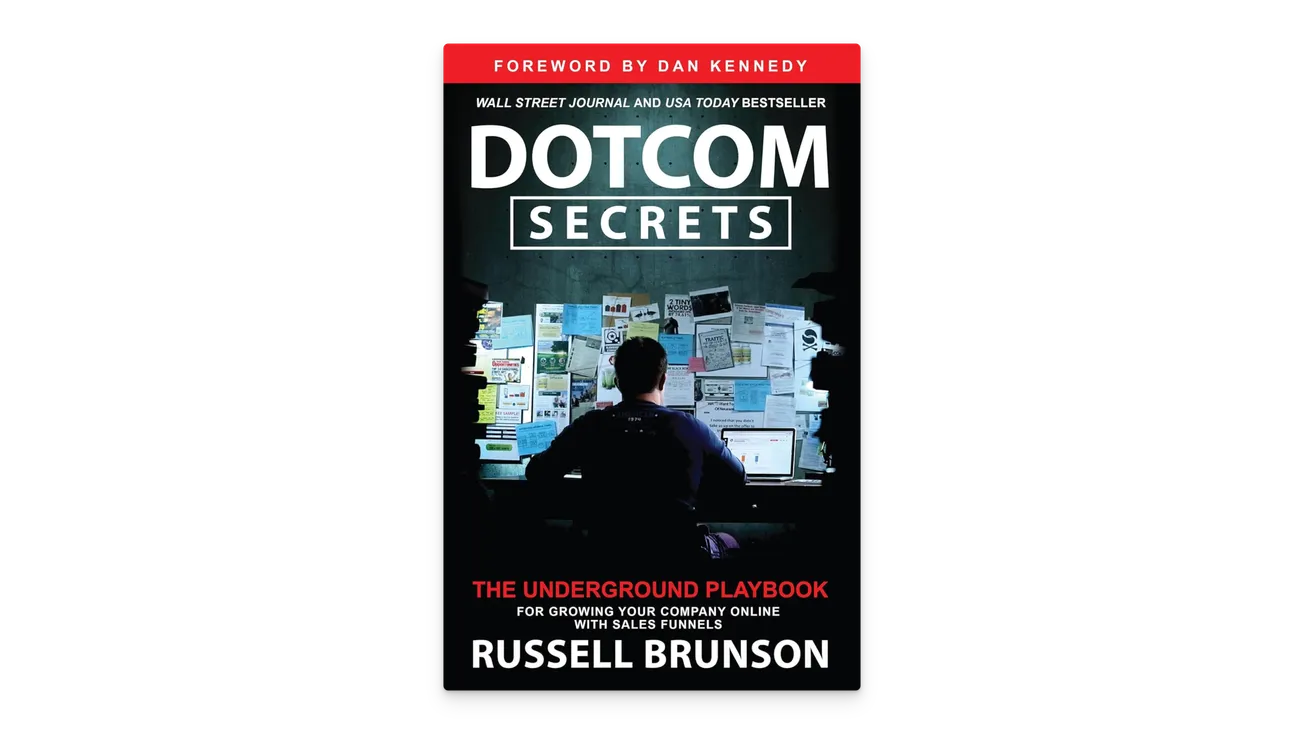Table of Contents
Summary
Hermès has built its reputation on a foundation of craftsmanship, exclusivity, and a long-term approach to luxury. Since its founding in 1837 by Thierry Hermès as a harness workshop in Paris, the brand has remained true to its artisanal roots, even as it expanded into fashion, accessories, and lifestyle products. Hermès’ commitment to quality over quantity, paired with its strategy of limited production, has made it one of the most prestigious and sought-after luxury brands in the world.
Business Model and Strategy
Hermès’ business model is centered around creating demand through scarcity. The company produces only a limited number of products each year, ensuring that demand always exceeds supply. This strategy allows Hermès to maintain its high profit margins, while reinforcing the brand’s image of exclusivity. The focus on craftsmanship, with each product handmade by skilled artisans, allows Hermès to command premium prices and foster long-term customer loyalty.
Iconic Products
The Birkin Bag, introduced in 1984, and the Kelly Bag, popularized by Grace Kelly in the 1950s, are two of Hermès' most iconic products. Both are handcrafted and often have long waiting lists, making them symbols of status and wealth. In addition, Hermès’ silk scarves, first introduced in 1937, remain timeless symbols of elegance and artistry, while other leather goods and accessories, such as belts and timepieces, contribute to the brand's ongoing success.
Challenges and Future Outlook
As Hermès continues to expand globally, it faces the challenge of maintaining exclusivity in an increasingly digital world. The brand has been cautious in its approach to e-commerce, ensuring that online availability does not dilute its luxury image. Another challenge lies in adapting to consumer demands for sustainability, as Hermès navigates the growing pressure to source materials ethically and responsibly.
Despite these challenges, Hermès is well-positioned for continued growth, with a strong focus on long-term value creation and a loyal customer base. Its ability to balance tradition with innovation while maintaining its core values ensures that Hermès will remain a leader in the luxury market for generations to come.

1. Introduction
In a world where many companies chase fast growth, immediate profits, and market dominance, Hermès stands as a beacon of patience, craftsmanship, and exclusivity. Founded in 1837, the French luxury brand has built its reputation not by expanding rapidly or following trends, but by adhering to a philosophy of slow, deliberate growth. Hermès creates products that are not just luxurious, but timeless, designed to be coveted for generations rather than seasons.
At its core, Hermès values quality over quantity. This approach has allowed it to maintain unparalleled control over its brand, product lines, and customer experience. Unlike many of its competitors, Hermès has avoided mass-market appeal, focusing instead on cultivating demand through scarcity, artistry, and tradition. Its iconic products, from the Birkin Bag to the silk scarf, exemplify the brand’s commitment to hand-craftsmanship and exclusivity.
In this in-depth analysis, we’ll explore how Hermès has navigated nearly two centuries in the luxury market, examining the business strategies that have helped the brand thrive in an increasingly fast-paced world. We’ll dive into Hermès’ history, business model, product innovations, and the unique strategy that continues to set it apart from its peers.
2. Historical Overview and Brand Legacy

Hermès’ journey began in 1837, when Thierry Hermès established a workshop in Paris that specialized in crafting high-quality harnesses and bridles for the aristocracy. From the very beginning, the brand positioned itself as a purveyor of excellence, catering to elite clientele with products that combined functionality and artistry. This commitment to craftsmanship became the foundation upon which Hermès would build its legacy.
By the early 20th century, under the leadership of Émile-Maurice Hermès, the brand expanded beyond equestrian products to include leather bags and accessories. One of the earliest milestones in this transition came in 1922 when the first Hermès handbag was created, marking the company’s foray into the world of fashion. Hermès’ ability to remain true to its roots while gradually expanding its offerings set it apart from other luxury brands that might have compromised quality for speed.
Throughout the 20th century, Hermès made a series of calculated moves that bolstered its reputation as an innovator while maintaining its heritage. In 1937, the company introduced its now-iconic silk scarves, further embedding itself into the luxury market. The 1956 rebranding of the Sac à Dépêches bag to the Kelly Bag—after it was popularized by Grace Kelly—became another defining moment in Hermès’ history, cementing its place in both fashion and popular culture.
Despite these expansions, Hermès never lost sight of its artisanal origins. The company resisted the pull toward mass production that many of its competitors succumbed to, preferring instead to maintain limited production and a focus on handcraftsmanship. This strategy not only preserved the brand’s integrity but also solidified Hermès as a symbol of enduring quality, a philosophy that continues to drive the business today.
3. Business Model Analysis

At the heart of Hermès’ success lies a business model that revolves around exclusivity, meticulous craftsmanship, and scarcity. Hermès has mastered the art of balancing tradition with a unique approach to luxury, avoiding the fast-paced, high-volume tactics of many competitors. Instead, Hermès has built its empire on a slow, deliberate production process, ensuring that each product meets its uncompromising standards.
Revenue Streams
Hermès generates revenue through several key product categories: leather goods (including the iconic Birkin and Kelly bags), ready-to-wear fashion, silk scarves, fragrances, jewelry, and home goods. However, leather goods, particularly handbags, remain the most significant driver of sales. The Birkin Bag alone is a critical piece of Hermès’ revenue strategy, contributing to its prestige and financial success.
In addition to its signature products, Hermès has also expanded into high-end lifestyle goods such as home furnishings and equestrian accessories, carefully choosing product lines that complement its heritage. This diversification has allowed Hermès to maintain growth without diluting its brand.
Profit Margins
One of the unique strengths of Hermès is its ability to maintain high profit margins through pricing power. The exclusivity of Hermès products, combined with the scarcity created by its limited production model, allows the brand to command premium prices. Each product is handmade, often requiring many hours of meticulous work, which justifies the price tag and strengthens the brand’s association with quality.
Additionally, Hermès has consistently maintained one of the highest margins in the luxury industry, thanks to its ability to resist discounting and seasonal sales. Hermès has cultivated a market where demand far exceeds supply, creating a controlled scarcity that fuels desire and ensures long-term profitability.
Global Expansion
While Hermès has expanded globally, it has done so with restraint, carefully selecting locations for its stores to ensure they align with the brand’s image. Unlike many luxury brands that have embraced rapid global franchising, Hermès has preferred to maintain tight control over its stores, which are typically located in prestigious shopping districts. This strategy reinforces the exclusivity of the Hermès experience, with every store embodying the brand’s ethos of craftsmanship and personal service.
By limiting the number of stores, Hermès can maintain control over the customer experience and ensure that the brand’s values are upheld. This selective expansion has enabled Hermès to grow steadily, even in emerging markets such as China, where demand for luxury goods has surged.
Ownership Structure
Hermès is still largely controlled by the Hermès family, which retains around 70% ownership. This family control has allowed Hermès to maintain its long-term strategic vision, avoiding the pressures of short-term profitability that often come with external shareholders. The company has successfully resisted hostile takeovers, most notably a high-profile attempt by luxury conglomerate LVMH, which sought to gain control over Hermès in the early 2010s.
This independence is a key part of Hermès’ business model, allowing it to focus on long-term value creation rather than short-term gains. By prioritizing brand integrity and exclusivity over rapid expansion or market saturation, Hermès continues to thrive as a leader in the luxury sector.
4. Craftsmanship and Artisanal Approach

At the core of Hermès’ business philosophy is an unwavering commitment to craftsmanship. Unlike many luxury brands that have scaled through industrialization and mass production, Hermès has remained true to its artisanal roots. Every Hermès product is handmade by skilled artisans, a practice that sets the brand apart and solidifies its reputation for unmatched quality.
École Hermès de Savoir-Faire
To preserve its artisanal heritage, Hermès created the École Hermès de Savoir-Faire, a school dedicated to training future generations of artisans. This institution ensures that the centuries-old techniques used to create Hermès products are passed down, maintained, and perfected over time. Through rigorous training, artisans learn the precise skills required to craft everything from leather goods to silk scarves, maintaining Hermès’ reputation for excellence.
The school not only helps sustain Hermès’ high standards but also reinforces the brand’s commitment to slow, careful production—each item is made by hand, ensuring the highest level of quality. By investing in the education and development of its artisans, Hermès safeguards its legacy and positions itself to continue offering handcrafted, unique products in a market dominated by mechanization.
Sourcing and Sustainability
The attention to craftsmanship begins long before an artisan starts working on a product. Hermès places immense importance on sourcing the finest materials, whether it’s leather for bags or silk for scarves. The brand works closely with select tanneries and suppliers to ensure that all materials meet its exacting standards for quality, durability, and sustainability.
Hermès has also taken steps to address the growing demand for sustainability in fashion. While the brand’s emphasis on handcrafting already lends itself to a less wasteful production model, Hermès is actively seeking more sustainable and ethical sources for its materials. This includes efforts to ensure responsible sourcing of exotic leathers and maintaining transparency in their supply chain.
In addition to its sourcing practices, Hermès emphasizes the longevity of its products. Each Hermès item is designed and crafted to last a lifetime, in contrast to the fast-fashion mentality. By creating products that are cherished and passed down through generations, Hermès naturally aligns itself with the growing movement toward sustainable luxury.
A Slow Production Process
In a world where speed often trumps quality, Hermès stands out by embracing a slow production process. Each product takes hours—sometimes days—to complete. For example, the iconic Birkin Bag can take up to 24 hours of labor, as it is entirely handcrafted by a single artisan. This attention to detail ensures that every stitch is perfect, every piece of leather is flawless, and every product lives up to the Hermès name.
This slow, deliberate process is not just about maintaining quality—it also reinforces Hermès’ strategy of scarcity. By limiting the number of products produced each year, Hermès can maintain exclusivity and fuel demand. The scarcity of its products, combined with their superior craftsmanship, creates a desire that cannot be fulfilled instantly, adding to the allure of the brand.
5. Innovation in a Traditional Business

While Hermès is often seen as a guardian of tradition, the brand has successfully balanced its rich heritage with strategic innovation. Rather than succumbing to the rapid trends and fast-paced demands of the modern luxury market, Hermès has found ways to innovate while staying true to its roots. This approach has allowed the company to grow and thrive in an increasingly competitive landscape, without sacrificing the quality and exclusivity for which it is known.
New Product Lines and Diversification
Hermès has expanded into new product categories over the years, but each new venture has been carefully curated to align with its brand values. The company’s move into ready-to-wear, fragrances, watches, and home goods has been deliberate, ensuring that every product reflects the same dedication to craftsmanship as its iconic handbags and scarves. For example, Hermès’ furniture and homeware collections are designed with the same attention to materials, detail, and artisanal methods, giving the brand a broader footprint in the luxury lifestyle market.
Each expansion into a new category is built on a foundation of craftsmanship and timeless design, ensuring that the Hermès ethos remains intact. The company has avoided chasing fads or trends, choosing instead to offer products that complement and enhance its existing offerings. This deliberate approach to diversification has allowed Hermès to maintain its luxury status while growing its product portfolio.
E-Commerce Strategy
Unlike many of its competitors, Hermès was slow to embrace e-commerce, initially wary of how an online presence might impact its exclusive, high-touch customer experience. However, as digital sales became an inevitable part of the luxury market, Hermès found a way to engage customers online while maintaining its core values.
The company’s e-commerce platform is an extension of its carefully crafted in-store experience, designed to reflect the brand’s exclusivity and craftsmanship. Products are still limited in availability online, reinforcing the scarcity that drives demand. Hermès’ ability to adapt to the digital world without losing its sense of exclusivity has allowed it to reach new customers while preserving its brand identity.
Adaptation to Emerging Markets
As the global appetite for luxury goods has grown, Hermès has strategically expanded into new markets, particularly in China and other emerging economies. However, Hermès’ approach to these new markets has been characterized by patience and restraint. The company has not opened stores at the same rapid pace as some of its competitors, preferring instead to wait until the timing and market conditions were right.
In these emerging markets, Hermès remains committed to its slow-growth strategy, introducing its products and brand values in a way that aligns with the local culture while still maintaining its global prestige. The company has cultivated a loyal customer base in regions such as Asia by emphasizing exclusivity, craftsmanship, and personal relationships, all while gradually expanding its physical and digital presence.
Innovation Without Compromise
While Hermès has modernized certain aspects of its business—like expanding into new product lines or launching e-commerce—it has done so without compromising the values that have made it a luxury icon. Innovation at Hermès doesn’t come at the expense of quality, heritage, or exclusivity. Instead, it complements these elements, allowing the brand to stay relevant in the modern market while remaining true to its core principles.
Hermès teaches a valuable lesson: innovation doesn’t always have to mean disruption. In fact, sometimes the most effective innovation is a commitment to doing things slowly, carefully, and exceptionally well, even in the face of a fast-changing world.

6. Competitive Analysis
Hermès operates in an increasingly competitive luxury market, where brands are constantly vying for consumer attention and market share. Despite the aggressive strategies of competitors, Hermès has remained steadfast in its approach, carving out a unique position as the epitome of slow luxury. By focusing on craftsmanship, scarcity, and long-term value, Hermès has successfully differentiated itself from other luxury players. This section explores how Hermès’ strategy compares to key competitors and the broader luxury industry.
LVMH vs. Hermès
One of Hermès’ most notable competitors is LVMH, the world’s largest luxury conglomerate, which owns brands such as Louis Vuitton, Dior, and Fendi. While LVMH has taken a volume-driven approach to luxury, focusing on rapid product releases, widespread availability, and aggressive marketing, Hermès has stuck to its core strategy of limited production and exclusivity. This difference is especially evident in how both companies manage their product lines.
LVMH tends to produce a higher volume of goods and has embraced the concept of “accessible luxury” to attract a broader customer base. Hermès, on the other hand, has remained focused on a select group of ultra-high-net-worth individuals, offering products that are scarce, handmade, and often require months or even years to acquire.
LVMH’s strength lies in its ability to reach a larger audience and generate higher short-term profits. Hermès, however, plays the long game, focusing on building an aura of exclusivity that strengthens its brand equity over time. By maintaining independence and family control, Hermès has resisted pressure to scale quickly or dilute its luxury status.
Luxury Conglomerates vs. Independent Strategy
Most of Hermès’ competitors in the luxury space, such as Gucci (owned by Kering) and Prada, are part of large conglomerates. These companies benefit from shared resources, economies of scale, and global marketing power. However, conglomerate-owned brands are often pressured to deliver short-term profits to shareholders, which can lead to faster product cycles and a dilution of exclusivity.
Hermès’ independence has been one of its greatest strengths. Family ownership allows the company to prioritize long-term brand integrity over short-term financial results. This independence gives Hermès the freedom to focus on craftsmanship, limit production, and maintain its reputation as the pinnacle of luxury without needing to answer to external shareholders.
Scarcity Strategy vs. Fast Luxury
Hermès’ use of scarcity as a business strategy is one of the key factors that sets it apart from brands like Chanel, Gucci, and Louis Vuitton, which have leaned into fast luxury. These brands often release new collections at a rapid pace, with wide availability in stores and online. While this strategy can generate significant sales in the short term, it risks overexposure and brand fatigue.
In contrast, Hermès carefully limits the number of products it releases each year. By maintaining long waiting lists and producing only a few high-quality pieces, Hermès keeps demand high while maintaining an air of mystery and exclusivity around its products. The scarcity model not only justifies premium prices but also reinforces Hermès’ image as a brand that cannot be easily attained, making ownership of a Hermès product even more desirable.
The Brand Experience
Another key differentiator between Hermès and its competitors is the brand experience. Hermès stores are designed to offer an intimate, personal shopping experience, where clients are treated as individuals rather than as consumers. Many other luxury brands, while offering exceptional customer service, have embraced a more transactional retail model to accommodate larger volumes of shoppers.
For Hermès, the focus is on building long-term relationships with clients. Whether it’s a first-time buyer or a long-standing customer, the goal is to create an experience that reflects the brand’s values of craftsmanship, exclusivity, and personal attention. This relationship-driven approach to customer service is rare in today’s luxury landscape and is a significant reason why Hermès stands apart from its peers.

7. Financial Performance
Hermès is not only a master of craftsmanship and exclusivity but also a powerhouse of financial stability and growth. While many luxury brands rely on aggressive marketing and rapid product cycles, Hermès has proven that a patient, long-term approach can deliver consistent financial success. Its business model, rooted in scarcity and high margins, has allowed the brand to weather economic downturns and maintain profitability, even during periods of market volatility.
Key Financial Metrics
Hermès consistently posts some of the highest margins in the luxury industry. This is largely due to its ability to command premium prices for its limited-edition, handmade products. In recent years, Hermès has reported operating margins of over 30%, significantly higher than most of its luxury peers. This is a direct result of its exclusivity model, which creates demand that far exceeds supply.
Revenue growth at Hermès has been steady, averaging between 5% and 10% annually over the past decade. This growth is particularly impressive given Hermès’ deliberate strategy of limited production and selective expansion. Unlike many competitors, Hermès does not chase short-term revenue spikes, opting instead to maintain long-term growth through brand preservation.
Stock Performance
Hermès’ stock has performed exceptionally well, reflecting investors’ confidence in its long-term strategy. Over the past decade, the company’s shares have consistently outperformed the broader luxury market and benchmark indices. Investors value Hermès for its steady revenue growth, high margins, and ability to remain independent despite hostile takeover attempts.
One of the most notable events in Hermès’ financial history was the attempted takeover by LVMH in the early 2010s. LVMH quietly amassed a significant stake in Hermès, sparking a battle for control. However, Hermès fought back, successfully preserving its independence and reinforcing its commitment to family ownership. This incident only strengthened the brand’s position as one of the few remaining independent luxury houses.
Impact of Economic Cycles
Hermès has proven resilient in the face of economic downturns. During the 2008 financial crisis and the COVID-19 pandemic, Hermès maintained strong profitability and experienced only minimal declines in sales compared to its competitors. This resilience is largely due to the brand’s focus on ultra-high-net-worth individuals, who are less impacted by global economic fluctuations.
Additionally, Hermès’ products, particularly its handbags, are often viewed as investment pieces. The Birkin Bag, for example, has been known to appreciate in value, making it a more stable asset than many traditional investments. This investment appeal provides Hermès with a unique advantage, as consumers view their products not only as luxury goods but as financial assets.
Long-Term Financial Outlook
Looking ahead, Hermès is well-positioned to continue its steady growth. The brand’s focus on quality, exclusivity, and sustainability resonates with a growing number of consumers who are seeking more meaningful and long-lasting luxury purchases. Hermès has also made strategic investments in digital channels and emerging markets, ensuring that it remains relevant in a rapidly changing global market.
With strong financial performance, a solid balance sheet, and an unwavering commitment to its core values, Hermès is poised to remain one of the most profitable and respected luxury brands in the world.
8. Marketing and Brand Positioning

Hermès is unique in the luxury industry for its minimalist approach to marketing. Unlike many luxury brands that invest heavily in advertising campaigns and celebrity endorsements, Hermès has built its brand largely through word of mouth, exclusivity, and the mystique surrounding its products. This strategy has positioned Hermès as one of the most prestigious and desirable brands in the world, without relying on traditional marketing methods.
Word-of-Mouth Strategy
Hermès has mastered the art of letting its products speak for themselves. Rather than pursuing aggressive marketing campaigns, the brand relies on its reputation for craftsmanship, exclusivity, and long waiting lists to create buzz. The Birkin and Kelly bags, for example, have become cultural symbols of wealth and status, thanks in part to their scarcity and the public fascination with owning one.
By focusing on organic word of mouth and customer experience, Hermès has avoided overexposure and maintained its elite status in the eyes of consumers. The fact that Hermès products are difficult to obtain only adds to their allure, making ownership a statement of privilege and sophistication.
Celebrity Endorsement (Indirect)
While Hermès does not officially endorse celebrities, its products are often associated with the rich and famous. This indirect celebrity endorsement has played a significant role in bolstering the brand’s image. For example, the Birkin Bag was famously named after actress Jane Birkin, and the Kelly Bag was named in honor of Grace Kelly. These associations have helped elevate the brand’s prestige without the need for paid endorsements or partnerships.
The fact that many high-profile individuals, from royalty to Hollywood stars, are seen carrying Hermès products creates a powerful form of social proof. This reinforces the idea that Hermès is not just a luxury brand, but a mark of personal success and exclusivity.
In-Store Experience and Clienteling
One of Hermès’ strongest marketing assets is its in-store experience. Hermès stores are designed to offer more than just a retail transaction—they provide a luxurious, personalized shopping experience. The brand places a strong emphasis on building long-term relationships with its clients, a strategy known as “clienteling.”
Sales associates at Hermès stores are highly trained to understand the brand’s values and products, providing customers with an intimate and tailored experience. Whether it’s a first-time buyer or a long-time collector, Hermès ensures that every customer feels like they are receiving special treatment. This commitment to personal service fosters loyalty and strengthens the brand’s connection with its clientele.
Minimalist Advertising
When Hermès does engage in advertising, it is subtle, artistic, and reflects the brand’s core values of craftsmanship and timelessness. Unlike its competitors, Hermès does not rely on flashy, high-budget campaigns. Instead, its advertisements are understated and focused on showcasing the quality of its products.
This minimalist approach is consistent with Hermès’ broader brand strategy—focusing on exclusivity and scarcity rather than mass-market appeal. By keeping its advertising selective and refined, Hermès maintains an air of mystery and exclusivity, further enhancing its desirability.
Global Brand Consistency
One of the keys to Hermès’ brand success is its ability to maintain consistency across global markets. Whether in Paris, New York, or Tokyo, Hermès stores and customer experiences are uniform in their elegance and quality. This consistency helps reinforce Hermès’ global brand image as a luxury leader and ensures that customers, no matter where they are, have the same high expectations met.
9. The Birkin Bag: A Case Study in Scarcity and Exclusivity

Few products in the fashion world have reached the iconic status of the Hermès Birkin Bag.
Introduced in 1984, the Birkin has become a symbol of exclusivity, wealth, and timeless style. The Birkin Bag's creation, design, and production process offer a perfect case study in how Hermès leverages scarcity, craftsmanship, and cultural significance to maintain its status as a leading luxury brand.
Origins of the Birkin Bag
The story behind the Birkin Bag’s creation is a pivotal moment in Hermès' history. The bag was conceived after a chance meeting on an airplane between Hermès CEO Jean-Louis Dumas and British actress Jane Birkin. During their conversation, Birkin expressed the need for a practical yet stylish handbag that could carry all her essentials. Dumas sketched the initial design on an airline sick bag, and the Birkin Bag was born.
Since then, the Birkin Bag has become one of the most coveted items in the world of fashion, known for its exclusivity, high craftsmanship, and long waiting lists. Each Birkin is handmade by a single artisan and can take up to 24 hours to complete.
Design and Craftsmanship
What truly sets the Birkin Bag apart is the level of craftsmanship involved in its production. Hermès uses the finest materials—often exotic leathers such as crocodile or ostrich—and combines them with meticulous craftsmanship. Each bag is constructed by hand, using a saddle stitch technique that ensures durability and longevity. The artisan who crafts the bag takes great care in selecting the leather, cutting it, and stitching every piece together to create a flawless, functional work of art.
The exclusivity of the Birkin Bag also comes from the fact that Hermès produces them in very limited numbers each year. This scarcity drives demand and creates a sense of urgency among buyers, further increasing the bag's perceived value.
Cultural Impact and Financial Value
The Birkin Bag has transcended fashion to become a cultural icon. It has appeared in countless movies, TV shows, and music lyrics, further embedding itself in popular culture as a symbol of wealth and success. For many, owning a Birkin is more than just having a luxury item—it is a statement of status and a financial asset.
Over the years, the Birkin Bag has also become a sought-after investment. Some limited-edition Birkins have sold for over $500,000 at auction, and the bag’s resale value often appreciates over time. This financial aspect makes the Birkin not only a luxury good but also an asset class of its own.
Scarcity as a Strategy
The scarcity of the Birkin Bag is one of the most effective tools Hermès uses to maintain the brand's exclusivity. Hermès does not disclose how many Birkin Bags are produced each year, and customers must often join long waiting lists to acquire one. Even then, selection is not guaranteed, and many clients must build a relationship with Hermès before they are offered the opportunity to purchase a Birkin.
This strategy of scarcity, combined with high demand, has made the Birkin Bag one of the most sought-after and difficult-to-obtain luxury items in the world. Hermès’ deliberate control over the availability of its most iconic product reinforces its commitment to exclusivity and craftsmanship.
Key Lessons from the Birkin Bag
The Birkin Bag exemplifies Hermès' overall business strategy: a focus on scarcity, quality, and cultural relevance. By keeping production limited and maintaining the highest standards of craftsmanship, Hermès has turned the Birkin Bag into more than just a product—it is a status symbol and investment. This case study shows that in luxury, less is often more, and maintaining exclusivity can be a powerful business tool.
10. Challenges and Future Outlook

While Hermès has maintained its position as a leader in the luxury industry for nearly two centuries, the company faces a set of challenges that will define its future success. As the luxury market continues to evolve and consumer expectations shift, Hermès must navigate a rapidly changing landscape while preserving its core values of craftsmanship, exclusivity, and long-term value creation.
Maintaining Exclusivity in a Digital World
One of the greatest challenges Hermès faces is preserving its exclusivity in an increasingly digital world. As luxury brands embrace e-commerce and social media, the risk of overexposure grows. Hermès has been cautious in its approach to digital, slowly expanding its online presence without compromising the air of exclusivity that surrounds its products.
However, as younger, digitally-native generations become a more significant portion of luxury consumers, Hermès will need to balance the demand for online accessibility with its longstanding tradition of scarcity and in-store experiences. Finding the right balance between these two worlds will be key to maintaining its market position.
Succession and Leadership Changes
As a family-controlled business, Hermès' leadership has remained closely tied to its founding principles. However, with each generational shift, there are risks associated with leadership transitions. The Dumas family has successfully navigated leadership changes in the past, but as the company grows and faces new challenges, future leadership will need to stay true to the brand’s values while adapting to modern market demands.
Succession planning will play a critical role in ensuring Hermès’ continued independence and ability to remain focused on its long-term strategic vision. Maintaining the balance between family control and professional management will be crucial to the company’s success in the coming decades.
Sustainability and Ethical Sourcing
With growing consumer interest in sustainability and ethical business practices, Hermès is increasingly expected to address its environmental and social impact. The company’s use of exotic leathers and animal-based materials has drawn criticism from some corners, and luxury consumers are increasingly seeking brands that align with their values of sustainability and ethical sourcing.
While Hermès has taken steps to address these concerns—by emphasizing the longevity of its products and ensuring that its sourcing practices are transparent—the brand will need to continue evolving in this area. Finding innovative ways to incorporate sustainable materials and practices without compromising the craftsmanship and quality that Hermès is known for will be critical to staying relevant in a changing market.
Competing in a Rapidly Evolving Luxury Market
The luxury industry is changing faster than ever before, with new competitors emerging and established brands like LVMH and Gucci adopting more aggressive growth strategies. Hermès has historically taken a slower, more deliberate approach to expansion, focusing on craftsmanship and limited production. However, as competitors embrace faster product cycles and reach new markets at a rapid pace, Hermès must find ways to compete without compromising its brand values.
The brand’s ability to innovate while remaining rooted in its core principles will determine its ability to fend off competitors and maintain its position as a leading luxury house.
Future Outlook
Despite these challenges, Hermès is well-positioned for continued success. The brand’s commitment to long-term value creation, exclusivity, and artisanal craftsmanship has allowed it to build a loyal customer base that transcends economic cycles. By carefully navigating the challenges of the digital age, sustainability demands, and shifting consumer preferences, Hermès can continue to grow while preserving its brand integrity.
Hermès’ ability to adapt to new markets, invest in innovation, and maintain its independence will be key to its success in the future. As the luxury market evolves, Hermès will likely continue to serve as a model for how brands can balance tradition with innovation.
11. Strategic Takeaways
Hermès offers an exceptional blueprint for businesses looking to create lasting value, build a brand that transcends trends, and maintain exclusivity in a crowded marketplace. Its approach, centered on craftsmanship, scarcity, and patience, holds valuable lessons for leaders in all industries. Here are the key strategic takeaways from Hermès' business success:
1. The Power of Patience and Long-Term Thinking
Hermès is a testament to the value of long-term thinking in an increasingly short-term world. While many brands chase rapid growth, Hermès has built its empire by focusing on slow, sustainable expansion. Rather than diluting its brand through overproduction, Hermès maintains its exclusivity by producing only limited quantities of each product, ensuring demand always outpaces supply.
This strategy highlights the importance of prioritizing long-term brand equity over short-term gains. By maintaining its focus on craftsmanship and exclusivity, Hermès has built a brand that not only survives but thrives across generations.
2. Exclusivity as a Business Strategy
Hermès’ business model is rooted in creating demand through scarcity. By limiting the availability of its products—whether it’s the Birkin Bag or its limited-edition scarves—Hermès drives up demand and creates a sense of urgency among buyers.
For other brands, the lesson is clear: exclusivity can be a powerful tool when executed correctly. By carefully managing production and cultivating a sense of scarcity, companies can increase perceived value, enhance desirability, and command higher prices.
3. Craftsmanship and Quality Over Speed
Hermès has resisted the temptation to scale up quickly, opting instead to maintain its tradition of artisanal craftsmanship. Every Hermès product is handmade by skilled artisans, ensuring that each piece is unique and of the highest quality. This focus on quality over speed allows Hermès to command premium prices and foster deep customer loyalty.
For businesses, Hermès shows that investing in quality—whether in products, services, or customer experience—can pay off in the long run. In a world that often prioritizes speed and convenience, Hermès’ commitment to craftsmanship sets it apart and reinforces its luxury status.
4. Brand Consistency Across Markets
Despite its global presence, Hermès has remained consistent in its brand message and values. Whether a customer visits a Hermès store in Paris, New York, or Tokyo, they receive the same exceptional level of service and experience. This brand consistency reinforces Hermès' identity as a luxury leader, no matter where it operates.
For companies expanding internationally, the key takeaway is to maintain a consistent brand experience across markets. This ensures that the brand’s values and reputation are upheld, no matter the region.
5. Innovation Without Compromise
Hermès has shown that it’s possible to innovate while staying true to a brand’s core principles. Whether it’s expanding into new product categories like home goods or cautiously adopting e-commerce, Hermès has modernized its offerings without compromising the craftsmanship, quality, and exclusivity that define its brand.
The takeaway for other businesses is that innovation doesn’t have to mean sacrificing the qualities that make a brand unique. By staying rooted in its values while adapting to changing market demands, Hermès demonstrates how to strike the right balance between tradition and modernity.
6. Protecting Brand Independence
One of Hermès’ greatest strengths is its family ownership, which has allowed the company to resist hostile takeovers and remain true to its long-term vision. This independence has enabled Hermès to avoid the pressures of external shareholders and focus on creating lasting value rather than short-term profits.
For businesses, maintaining control over a company’s direction and vision—whether through family ownership or other forms of governance—can be a key to ensuring that the brand remains focused on its long-term goals.
Conclusion
Hermès has built a brand that is synonymous with luxury, craftsmanship, and exclusivity. Its commitment to long-term value creation, its deliberate strategy of scarcity, and its dedication to quality set it apart in the world of luxury. For leaders in any industry, the lessons from Hermès are clear: prioritize quality, invest in craftsmanship, maintain exclusivity, and play the long game.
12. Timeline of Hermès
Here is a concise timeline of the key milestones in Hermès' rich history:
1837:
Thierry Hermès founds the company as a harness and saddle workshop in Paris, serving the European elite.
1900:
Hermès creates the Haut à Courroies bag, designed for equestrian riders to carry their saddles. This marks Hermès' first step into leather goods.
1922:
Hermès introduces its first leather handbag, expanding beyond equestrian accessories into fashion.
1937:
The iconic Hermès silk scarf is introduced, which becomes an emblematic product of the brand and remains one of its most recognizable items.
1956:
The Sac à Dépêches is renamed the Kelly Bag after Grace Kelly, who was famously photographed using the bag. This solidifies Hermès' presence in popular culture.
1984:
The Birkin Bag is born after a famous encounter between Hermès CEO Jean-Louis Dumas and actress Jane Birkin on a flight, leading to one of the most iconic luxury handbags in fashion history.
2008:
Hermès opens the École Hermès de Savoir-Faire, a school dedicated to training artisans in the company’s traditional craftsmanship techniques, ensuring the preservation of its unique skills.
2010:
LVMH initiates a controversial, stealthy acquisition of Hermès shares, leading to a corporate standoff between the two luxury giants. Hermès eventually fends off the takeover and remains independent.
2020-Present:
Hermès continues to thrive in the global luxury market, expanding its product lines while maintaining its commitment to craftsmanship, exclusivity, and limited production.
13. Most Iconic and Relevant Products
Hermès has a rich portfolio of products, each exemplifying the brand's commitment to craftsmanship, exclusivity, and luxury. Here are some of the most iconic and relevant products that have helped define Hermès' legacy:
1. The Birkin Bag (1984)
Arguably the most iconic product in Hermès’ collection, the Birkin Bag was created after a conversation between Hermès CEO Jean-Louis Dumas and actress Jane Birkin. Each Birkin is handcrafted and is synonymous with wealth and exclusivity, often requiring customers to wait years to acquire one. The Birkin has become a cultural icon, appreciated not only as a luxury item but also as an investment.
2. The Kelly Bag (1956)
The Kelly Bag is another classic Hermès handbag, named after Grace Kelly, the actress and Princess of Monaco, who was famously photographed carrying it. Like the Birkin, the Kelly is handmade by Hermès artisans, and it represents the brand’s dedication to timeless elegance and quality.
3. Hermès Silk Scarf (1937)
Introduced in 1937, the Hermès silk scarf has become a symbol of the brand’s rich history and artistic vision. Each scarf is made from silk sourced from the company's own silk farm, and the designs are often inspired by nature, history, and art. The scarves are printed and crafted with incredible attention to detail, making them one of Hermès’ most enduring products.
4. Haut à Courroies Bag (1900)
The Haut à Courroies was the first leather bag produced by Hermès and was originally designed to carry equestrian gear. It laid the foundation for the company’s later ventures into handbags, including the Birkin and Kelly, and is still in production today as part of the brand’s classic leather goods line.
5. Hermès Belts and Leather Goods
Hermès belts, particularly the ones featuring the iconic "H" buckle, are another signature product in the brand's collection. The leather belts are known for their quality and versatility, serving as both fashion statements and practical accessories. These belts, along with other leather goods, highlight Hermès’ mastery in working with fine materials.
6. Hermès Timepieces
Hermès has expanded into the luxury watch market, offering elegant and high-quality timepieces that blend fashion and functionality. Hermès timepieces, such as the Cape Cod and Arceau models, are crafted with the same attention to detail that the brand brings to its leather goods and fashion accessories.
7. Hermès Home Collection
In recent years, Hermès has expanded into home goods, offering everything from fine china to luxurious home furnishings. The Hermès Home Collection brings the brand’s craftsmanship and aesthetic into the world of interior design, allowing customers to live a lifestyle fully immersed in Hermès luxury.
Each of these products reinforces Hermès’ position as a leader in the luxury market, emphasizing its commitment to artisanal excellence and exclusivity.
14. Key People in Hermès’ History
Hermès has been shaped by a series of visionary leaders, each contributing to the brand’s enduring legacy of craftsmanship and luxury. Here are some of the most influential figures in the company’s history:
1. Thierry Hermès (Founder)
Thierry Hermès founded the company in 1837 as a harness workshop in Paris. His dedication to superior craftsmanship and attention to detail laid the foundation for the brand's focus on quality and exclusivity. Initially serving the aristocracy, his products quickly became synonymous with luxury.
2. Émile-Maurice Hermès (Expansion Visionary)
The grandson of Thierry Hermès, Émile-Maurice played a pivotal role in expanding the brand beyond equestrian goods. He introduced the company’s first leather handbag in 1922, opening the door to the fashion world. Émile-Maurice also famously secured exclusive rights to the zipper for use in leather goods and clothing, making Hermès the first company to bring zippers to France.
3. Jean-Louis Dumas (Creative Force and CEO)
Jean-Louis Dumas, a fifth-generation member of the Hermès family, is one of the most influential figures in the brand’s modern history. He led the company from 1978 to 2006, and during his tenure, Hermès saw significant growth and international expansion. Dumas was responsible for the creation of the Birkin Bag and played a crucial role in positioning Hermès as the epitome of luxury. Under his leadership, Hermès strengthened its focus on craftsmanship and exclusivity, which are still the pillars of the brand today.
4. Jane Birkin (Muse)
Though not an official figure in the Hermès organization, British actress and singer Jane Birkin played a key role in the creation of the Birkin Bag. After a chance encounter with Jean-Louis Dumas on a flight, the two collaborated to design a handbag that was both practical and stylish. The Birkin Bag went on to become one of the most iconic products in fashion history, cementing her influence in the brand's legacy.
5. Grace Kelly (Cultural Icon)
Like Jane Birkin, Grace Kelly was instrumental in elevating Hermès to the heights of cultural significance. After the Princess of Monaco was photographed using what would later be called the Kelly Bag, the handbag became a global sensation. The Kelly Bag’s association with royalty and elegance helped cement Hermès as a household name in luxury.
6. Pierre-Alexis Dumas (Current Artistic Director)
As the current artistic director, Pierre-Alexis Dumas continues to uphold the family’s legacy while bringing a modern sensibility to the brand. He is the sixth-generation family member to lead the creative side of the business and remains committed to preserving Hermès’ artisanal heritage. Under his direction, Hermès has maintained its focus on craftsmanship while also exploring new product lines and innovations.
These key figures have not only shaped the direction of Hermès but have also played a vital role in maintaining the brand’s unwavering commitment to quality, craftsmanship, and exclusivity.






